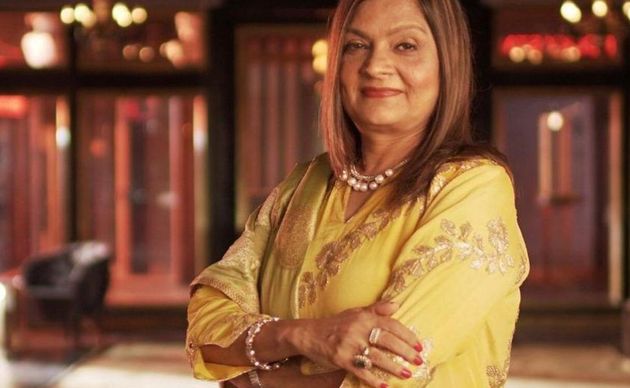
“I want someone who isn’t too dark, you know, fair-skinned,” says Richa, a 30-year-old Californian, to Sima Taparia in the final episode of Netflix’s Indian Matchmaking.
Released on July 16, 2020, the show follows Mumbai’s star matchmaker Taparia in India and the US, advising Indian Millenials as they search for a life partner.
Merging Netflix’s obsession with dating programmes and the recent success of Mindy Kaling’s Never Have I Ever (viewed by 40 million households around the world in its first four weeks on the platform), the show is already in the platform Top 10 in the UK.
Clearly, it appeals to a public either interested in the fantasy that is arranged marriages in the age of Tinder, or just looking for an entertaining dating programme with love, drama and good looking people.
However, as a South Asian man myself, I could not help but notice how the show chose to turn a blind eye to the problematic discourse depicted onscreen. Richa asking for a fair skinned partner with enthusiasm didn’t even make me blink because in each episode we witness Taparia, her clients and their parents referencing their fondness for light skin.
Colourism – the hatred of darker skin tones – is such an issue in South Asia that beauty giants Unilever and L’Oréal chose to change the name of their skin whitening products rather than taking them off the shelves. It would be too bad for business.
Even though Taparia’s market is broader than the South Asian continent, her services seem limited to wealthy Indian families and upper middle-class Americans. In Mumbai, self-titled “eligible bachelor” Pradhyuman’s closet protected by a fingerprint lock sets the tone. His mum looking for a girl from the same background isn’t surprising given they live in the Indian caste system.
In Houston, Texas, lawyer Aparna goes on a date with a 40-year-old podcast host who only recently left his parents’ house. “Srini the loser”, as her mom calls him, isn’t good enough. In an individualist and capitalist America, casteism is morphed into classism for second and third-generation Indian immigrants. Looking for someone from the same class background seems an acceptable criterion just as being “fit”, “trim”, “tall”, “Hindu”, “Sikh” or “vegetarian”.
When 25-year-old Akshay candidly admits that he has never been in love, and spent his time outside of India only studying in Boston, I was very intrigued. We had the perfect example of the Indian son who does everything his mum asks him to do, from getting a degree abroad to going back home to work in the family business.
I too never got the time to fall in love in uni because my parents sent me to France to study and come back to take over their hotel afterwards. It turned out I rebelled and chose another path, but Akshay did not. He seems to be imprisoned in the gilded cage he was born in.
As in any dating show, misogyny and sexism are included with the package. Akshay, while having nothing to say to his possible wife-to-be on their first meeting, wonders: “If she’s busy with her work, who’s gonna take care of the kids and all?”.
Women are also supplying misogyny here. Akshay’s mom says she is the one who gets to decide when her daughter-in-law is supposed to get pregnant. Taparia uses “compromise” as her ultimate rule to the women she coaches, while being way warmer to her male protégés.
“I taught all my clients a guru mantra: compromise and adjust. Isn’t that what we do if our flight is late at the airport? So why don’t we do it in our married lives?” the matchmaker said in an interview with Vogue India.
She describes an American client who is divorced with a child as someone who “cannot fit in some traditional Indian families”. She condones the people who see businesswoman Ankita as non-photogenic and too fat and the ones who look down on Nadia for being Indian-Guyanese.
I was happy to see a TV show tackling the discrimination people like Nadia and I suffer from as descendants of Indian indentured servitude. In the 19th century, our ancestors left India to work in the Caribbean and the Indian Ocean in French and British colonies. Yet no one gets it, and we seem never to be Indian enough in the Asian community and too Indian among our white peers. It might be the only part of the show that dug deeper.
Netflix knows how to produce content representing different sexualities, but sadly here, heterosexuality is the norm, pure and simple. LGBTQ+ South Asians don’t even exist, according to the show. I haven’t seen a programme without a non-heterosexual character in years. But once again, no one seems to care onscreen.
According to the executive producer in an interview for Jezebel: “Our show is not to admonish people, but hopefully will be a reflection, and hold a mirror up, and say: Let’s talk about what we value and how we need to change and think differently.”
Indian Matchmaking embodies a certain type of entertainment that refuses to challenge the status quo. Yet my feelings, as a dark skinned, fat, queer Indian man did get hurt given the nonexistence of people like me in the programme. It’s another reminder of why I ran away from this community in the first place.
Dan Hastings is a freelance journalist